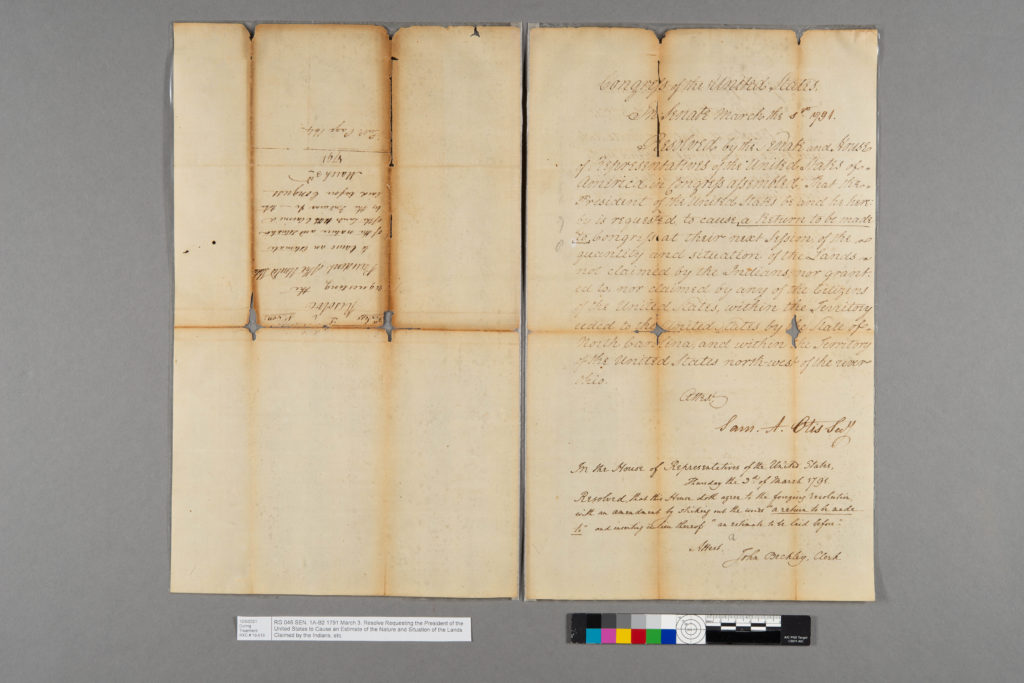Emerging Professionals Talks (March 3, 2022)
“Cellulose Acetate Film Delamination at the National Archives”
Presented by Williston Fund Recipient: Mitchel Gundrum, Conservator Technician at the National Archives and Records Administration

During the Washington Conservation Guild’s March 2022 Emerging Professionals Talks, Williston Fund Recipient Mitchel Gundrum presented on a treatment that he carried out in his role as a Conservator Technician at the National Archives and Records Administration (NARA). Mitchel began his talk by discussing the history of the documents and providing an introduction to cellulose acetate film lamination. This was followed by a detailed explanation of the process he used to delaminate one document from NARA’s collection.
The U.S. First Federal Congress lasted from March 4, 1789 to March 4, 1791 and served as the official start of operations for a new form of government. During this session, the group of amendments that would later be known as the Bill of Rights was drafted. Physical records from this historic event are stewarded by NARA who maintain an institutional mission to provide public access to federal records. The document that Mitchel treated is composed of iron gall ink manuscript on antique laid paper. Iron gall ink degradation is a well understood conservation issue, so following 20th-century trends in conservation practice, the documents were laminated in cellulose acetate film as a preventative measure. Cellulose acetate lamination is a technique that was developed in the 1930’s to strengthen paper documents by sealing them in a thermoplastic film. The practice was widespread from the 1930’s-1990’s. Cellulose acetate film lamination began to fall out of practice in the 1980’s as concerns were raised about physical and chemical instability of the material overtime. Removal of the acetate film lamination is a complicated and time consuming process, but for our country’s invaluable treasures, it will help ensure long-term preservation.
Mitchel began his treatment with extensive photographic documentation and a condition assessment. Next, he followed by spot testing to determine the appropriate solvent to use to effectively remove the cellulose acetate while also protecting the iron gall ink manuscript notations. His tests determined that 100% acetone was the most effective solvent. The first step, dissolving the cellulose acetate film, was performed in a fume hood. Following the acetone bath, the media was spot tested again and the document underwent a series of baths with conditioned water to remove degradation products and impart an alkaline reserve to slow further degradation of the paper substrate. The final bath included a 1.5-2% gelatin solution to replace the paper sizing that had washed out in the previous treatment steps and help further stabilize the paper support. The newly resized documents were dried for six weeks before Mitchel was able to continue with further treatment steps. At the time of this presentation, Mitchel is working on paper mends to make the documents safe to handle. Mitchel’s talk presented an interesting look at the history of conservation practices, as well as a discussion of a complicated treatment.
Meeting summary by: Kathryn Kenney, Library of Congress Advanced Book Conservation Intern, SUNY Buffalo State College Class of 2022
Attendance: 66 participants
Venue: virtual